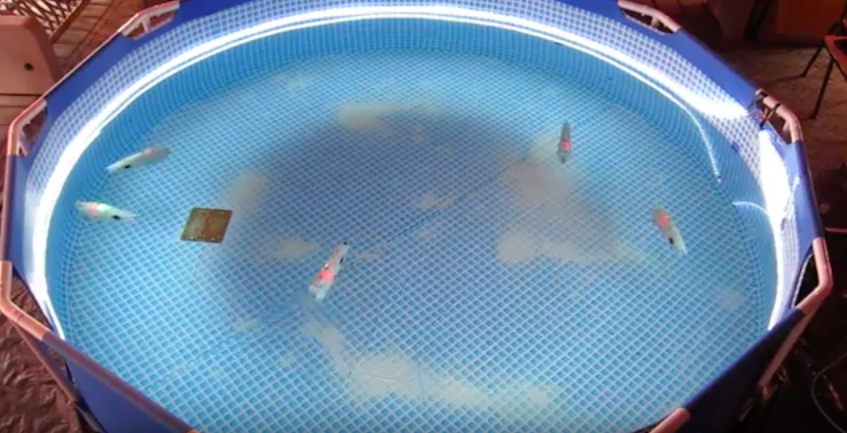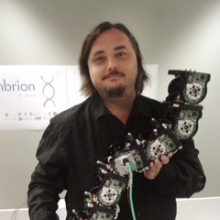
Robohub.org
The Year of CoCoRo Video #41/52: Metacognition

The EU-funded Collective Cognitive Robotics (CoCoRo) project has built a swarm of 41 autonomous underwater vehicles (AVs) that show collective cognition. Throughout 2015 – The Year of CooRo – we’ll be uploading a new weekly video detailing the latest stage in its development. In this week’s video we offered the swarm targets of different quality or size.
In addition to target search, we also implemented an improved version of the “fireslime” algorithm, which is inspired by fireflies and slime mould. We have already shown that this algorithm is capable of measuring the sizes of local robot groups with just a 1-bit blinking signal. By combining the target search and swarm-size measurement algorithms, we can generate a meta-cognition algorithm for the swarm.
First the robots search and aggregate at the targets. Then they count the size of their local aggregations and, if this number is too low, each robot knows that the swarm – as a whole – did not make a clear decision. This is clear metacognition by the swarm: the swarm is collectively aware of whether or not it knows what the best magnetic target site is.
tags: AUV, c-Research-Innovation, CoCoRo, EU robotics industry news, UAV, underwater video




